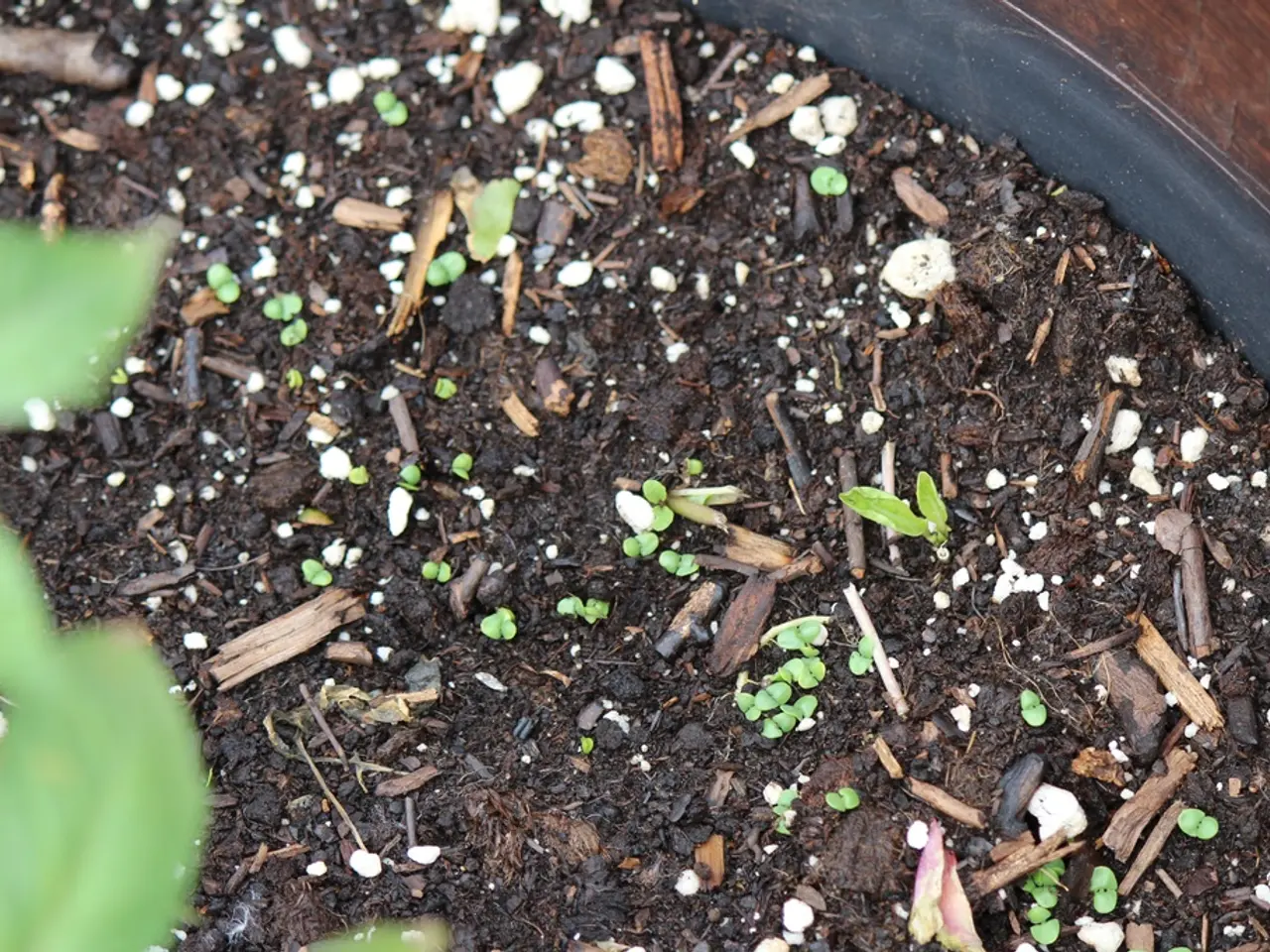Fundamental Aspects of Soil Testing in the World of Gardening
The Importance of Soil Testing in Gardening
Soil testing is an essential tool for gardeners who want to ensure the health and productivity of their gardens. This diagnostic method can be carried out at any time of the year, with the best results achieved before planting crops.
Collecting Soil Samples
To begin, collect soil samples from various parts of your garden. Dig 4 to 6 inches deep and remove stones, clumps, and debris to obtain a uniform sample.
Testing Soil Texture and Type
(Optional) To gain a better understanding of your soil, perform simple DIY tests such as the squeeze test and the ribbon test. These methods can help identify the soil's texture, whether it's sand, clay, or loam.
Measuring pH
Mix the soil with distilled water to create a muddy slurry, filter the liquid, and then dip a pH test strip into the liquid to measure acidity or alkalinity. Most plants thrive at a pH level between 6.0 and 7.0.
Analyzing Nutrient Content and Soil Health
Ideally, send your soil samples to a professional soil testing lab for a comprehensive analysis. The lab will measure macronutrients like nitrogen, phosphorus, and potassium, as well as micronutrients, organic matter percentage, cation exchange capacity, and base saturation ratios.
Using Soil Test Kits
Consumer-friendly kits like the Sunday Soil Test Kit provide detailed analysis and expert guidance after lab testing your soil.
Benefits of Soil Testing
- Optimizes Fertilization: Soil testing identifies nutrient deficiencies or excesses, preventing waste or plant damage.
- Adjusts Soil pH: Soil testing helps adjust the pH level for optimal nutrient availability and plant growth conditions.
- Assesses Organic Matter and Soil Health: Understanding the organic matter and soil health is crucial as it influences water retention, nutrient cycling, and microbial activity.
- Enables Tailored Soil Amendments: Informed decisions on soil amendments improve crop yield, plant health, and sustainability.
- Informed Decisions on Plant Selection and Soil Management: Making informed decisions leads to healthier gardens and cost savings.
In conclusion, proper soil testing combines collecting representative samples, measuring texture and pH (via simple DIY or lab methods), and conducting detailed nutrient and health analysis often via a commercial or lab-based soil test. This process supports effective garden management by providing insight for fertilization, pH adjustment, and soil amendment to optimize plant growth and sustainability.
Soil testing is not just for high-yield farms; it's also beneficial for small gardens. It measures the chemical or physical attributes of the soil, as well as the soil's nutrient status and lime requirements. By conducting soil testing, gardeners can ensure the right amount of fertilizers are used, preventing over-application that may affect water quality in local areas.
Moreover, soil testing is eco-friendly as it helps minimize fertilizer usage and reduces runoffs on waterways. After assessing the soil, fertilizer and lime recommendations are given for profitable farming. Soil testing can help assess the health of the garden soil and provide key nutrient deficiencies and crucial information about the soil structure for optimal crop yield.
Sustaining a Balanced Lifestyle
Gardening can contribute significantly to an individual's lifestyle, offering both physical activity and psychological benefits. Soil testing is a crucial aspect of successful gardening, allowing gardeners to nurture their home-and-garden with the appropriate soil conditions.
Boosting Home-and-Garden Productivity
Effective soil testing ensures that the garden yields fruitful results, enhancing the overall home-and-garden lifestyle by providing a productive, thriving space for leisure and sustenance.






